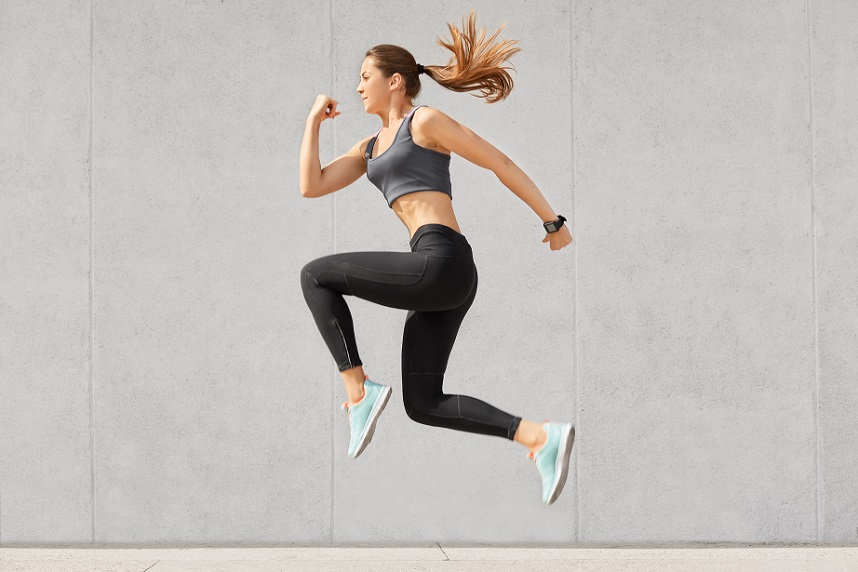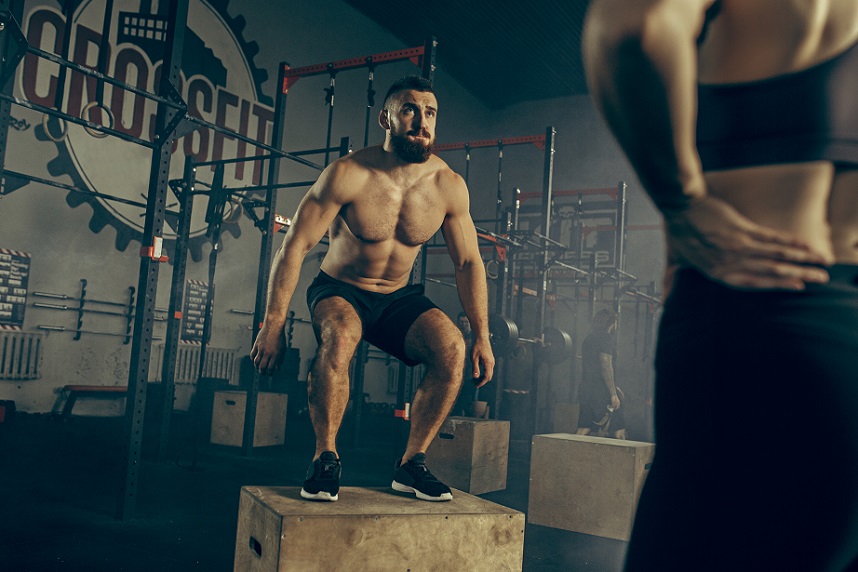Plyometrics Training:
Plyometrics, (the word, “plyo”) also known as jump training, is a type of high-intensity training that pushes your muscles to their maximum capacity. With this type of training, you’ll use both speed and force of different movements to build-up your muscle power. Consequently, why you may see plyometrics training in many athletes workouts, from high school to the pro’s.

The highest level of exertion is usually just within a short amount of time. This is done in order to improve your speed-strength, and overall endurance levels of the muscles.
This type of training uses the “stretch shortening cycle”. Basically meaning there is a lengthening movement quickly followed by a shortening movement of the muscle.
This is however, in no way just for athletes. Many individuals can enjoy the various benefits that plyometrics training has to offer. You may invest your time in this type of training for a multitude of reasons. For example, you’re involved in a sport or activity, requiring not just running, or sprinting, but also one that may be high impact. This can include, (but is not limited to) activities such as jumping and quick changes in body momentum, like tennis or basketball.
Alternatively, you’re someone just looking to increase their physical function for an intermural sport or as a hobby. Furthermore, you’re someone who was recently in an accident or trauma of some sort. You can be sure to find plyometrics type training in physical therapy offices across the country.
As the International Journal of Sports Physical Therapy 2015 (IJSPT) state, plyometric exercise is becoming a crucial component of late phase rehabilitation.
Plyometrics Explained! (4 Minutes)
Regardless of the reason, there are many great health and fitness benefits associated with these types of exercises. We’ll be discussing this type of training in detail throughout the rest of the post.
What Are The Benefits of Plyometrics Training?
So, what are the benefits of plyometrics training? In this part of the post, we’ll get into the real benefits of this intense workout routine. There are many ways to practice plyometrics training, but the end results generally lead to similar outcomes, obviously varying form person to person dependent on genetic make-up, over-all conditioning, and end outcome goals.
Can Help You Get Back Into Shape After an Injury:
If under the proper guidance, the IJSPT (specific to sport physical therapists) discuss the role plyometrics training has on the continued efforts to get athletes back to optimal performance as quickly and efficiently as possible. They state that plyometrics has become not only an integral part of post injury rehab, but also helping to prevent injuries in the first place.
Plyometrics is meant to enhance your muscle performance and growth. It can even reduce your chances of injury by helping you become stronger in specific areas of your body related to your sport, or movements you’re hoping to advance.
As always, if you’re using plyometrics to bounce back from an injury, consult an expert. This will help you get the results you want, in a safe, practical manner.
Great at Improving Athletic Performance:

Not only can you bounce back from an injury or prevent a future one, but you can actually increase athletic abilities through this type of training. Thus, helping to reach your optimal level of performance. Oftentimes, a key reason many people start doing plyometric training.
Fitness lovers want to see better results in the gym, right! Many athletes want to jump higher or move faster (i.e. laterally quickness) while they are playing a specified sport that requires those movements.
One thing to keep in mind on your journey with plyometrics is that it requires high demand/intense movements related to your discipline. It may not be beneficial to perform similar movements everyday. Contrarily, your muscles need time to recover and rebuild, just as if your were doing regular weight training.
A review of literature in 2016, demonstrated studies that found plyometrics training (PT) helped in many instances in improved athletic performance. For example, 2-3 sessions per week for 4-16 weeks yielded improvements in jump height, sprint and agility performance. As well as <8 weeks or short periods of PT also showed improvements in jumping, sprinting and agility in children and young adult amateur players.
You Can Target All Areas of Your Body:
Because plyometrics offers such a diverse range of exercises you can target multiple areas of your body with this type of training. Due to innovated exercise programs like CrossFit, and others, many of the movements used in plyometric training have been brought to the forefront, again. Anyone and everyone can participate as well. Essentially one is using his/her own body weight to perform most of the exercises.
Oftentimes, plyometrics training is viewed as strictly a lower body workout. However, to preform the exercises, the entire body should be engaged. With this type of engagement, one will get the most out of each maneuver.
Your cardiovascular system will also get a run for its money, as plyometrics is an intense workout that will shortly get your heart rate into those peak calorie burn zone(s), we all want and love. In many ways you’re combining cardio and strength training to expend even more calories. In the end adding to not only power gains, but weight loss (be it that you’re eating correctly as well).
It’s Easy to Do This Type of Training on Your Own:
One of the biggest benefits of plyometrics training is its accessibility. You do not need fancy gym equipment to do this type of workout. In fact, you can do plyometrics right in your home! Many other fitness routines require large amounts of money, equipment and space, or all three.
Luckily, you can tailor this exercise exactly to your body and your budget. In fact, a gym membership is not even a necessity. One of the best places to start plyometrics training is on a flat, soft surface. For example, a grassy field, something with a little give to it.
How Can You Start Plyometrics Training?
Plyometrics training involves many types of exercises, as mentioned before. This includes things like push-ups, sprinting, jumps (squat, box), and kicking. Any type of movement where you can max out your muscle movement in which you are building up energy in your muscles with resistance and then releasing it, can be used in your plyometric training. The important thing is to create deliberate movement. This helps create a tremendous workload on your body. Thus, helping to create more muscle power.

Athletes can do specific movements to improve themselves in their given sport. We’ll use basketball players as an example. A basketball player might do a series of jumps or hops to help them jump with more power when they shoot a free throw, or go up for a fadeaway shot.
In plyometrics training, this movement would be practiced, repeatedly. You would choose to do a number of sets to explosively use your muscles to jump. Again, with the goal being shortening, and then quickly lengthening the muscle. Keep in mind for some people, these movements may not be as appropriate as for others. Always speak with an expert if you are in a recovery phase for an injury or new to this training regimen. It’s appropriate to build-up to this kind of training, making sure your body is ready for it. Start slow, having the basics in mind, fine tuning the fundamentals of plyometrics.
There are common exercises that may give you a good start are. For example, variations of explosive push-ups, burpees, reverse knee lunge knee-ups, and squat jumps, along with a plethora of others. An important note as you move through some of the different exercises is to focus on your form. On the contrary, don’t just go through the motions.
Stand in front of a mirror and watch yourself. Make certain you’re doing the exercises correctly each and every time. As you get better, you may want to add more explosive guided movements into your routines, further challenging yourself with new exercises, more weight, or higher reps.
Final Tips and Advice For Plyometric Training:
Overall, plyometrics training is an ideal way for an athlete, people in late phase recovery, and fitness lovers to enhance their workouts, taking their fitness to new heights. These are challenging, but rewarding exercises that can make the most of your time and effort, especially if you’re doing them for a specific end goal in mind.
It’s important if you’re just starting out to be cautious. Jumping is a pretty standard type of movement. However, if it’s been a while since you’ve been physically active, balance could be an issue, as well as not understanding or knowing what your body is capable of. Be cautious, take it slow. This again is a high impact form of training, being to aggressive right off the bat, can lead to injury.
Resources:


